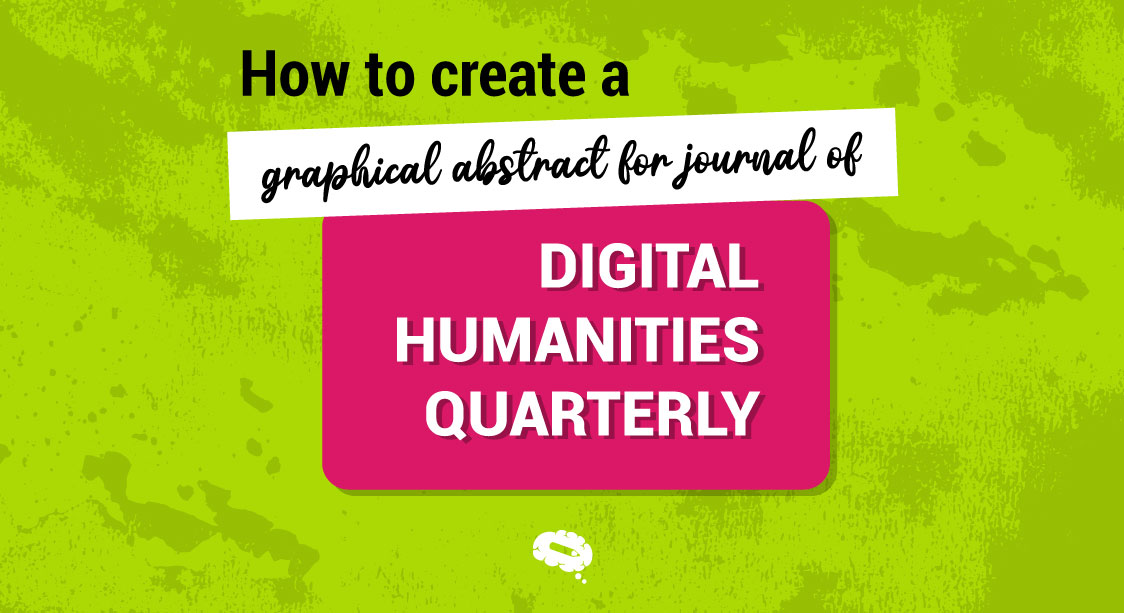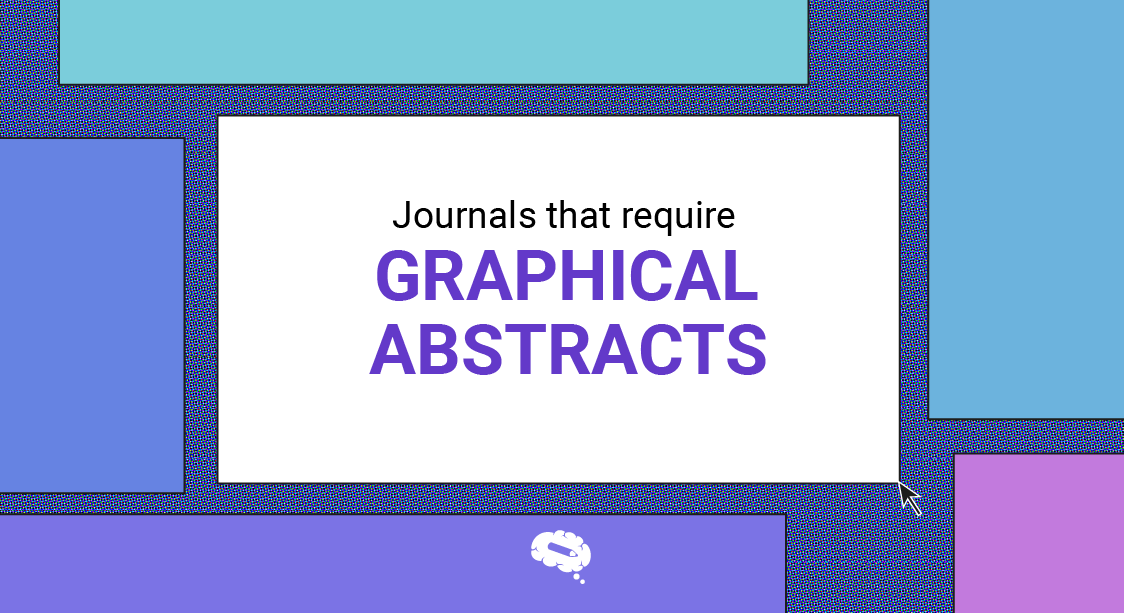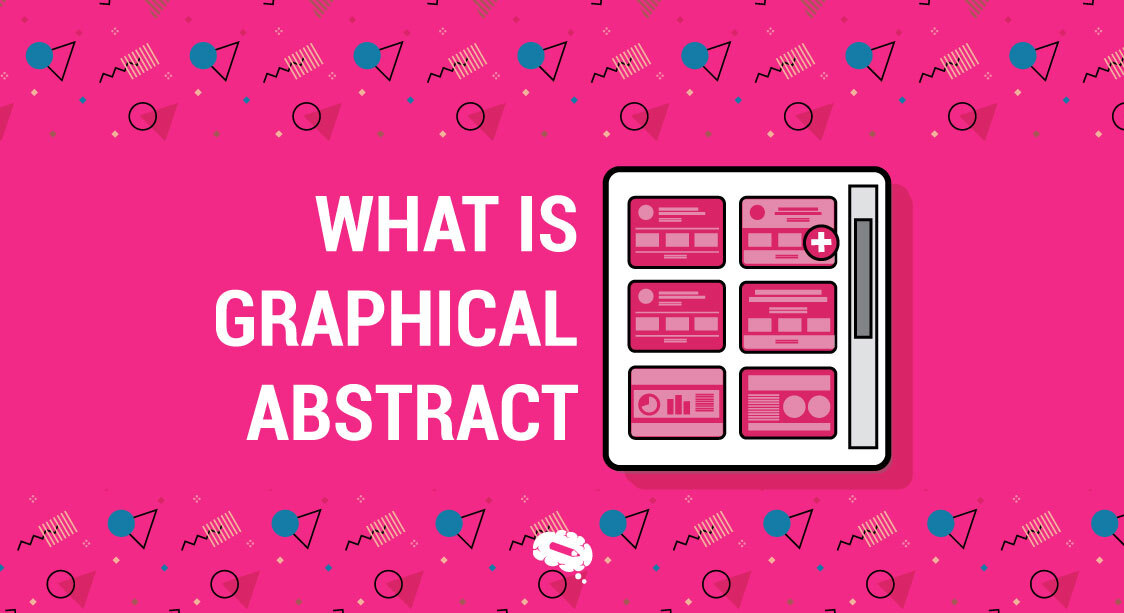Grafiske sammendrag er i ferd med å bli en viktig komponent i akademisk publisering, særlig innenfor visuelt drevne felt som digital humaniora.
De gir et kort visuelt sammendrag av forskningen din, noe som gjør det lettere for leserne å få et raskt overblikk over de viktigste poengene. Denne visuelle fremstillingen øker ikke bare synligheten til arbeidet ditt, men bidrar også til å gjøre forskningen mer tilgjengelig for et bredere publikum.
Now, what does it have to do with digital humanities, and how to draft a graphical abstract for the specified domain? That’s what we are going to see in this article and by the end of it, you know hvordan lage et grafisk sammendrag for digital humaniora quarterly!
Hva er et grafisk sammendrag?
Per definisjon er en grafisk sammendrag er en kortfattet visuell fremstilling av de viktigste funnene eller hovedpoengene i forskningsartikkelen din. Den fungerer som et sammendrag som gjør det mulig for leserne å raskt forstå essensen av arbeidet ditt uten å måtte dykke ned i den fullstendige teksten.
I Digital Humanities Quarterly (DHQ) kan et grafisk sammendrag være et effektivt verktøy for å formidle komplekse ideer i et mer lettfattelig format.
Hovedformålet med et grafisk sammendrag er å gjøre forskningen din mer synlig og tilgjengelig. I akademisk publisering, der oppmerksomheten er kort og konkurransen om leserne stor, kan et godt utformet grafisk sammendrag utgjøre forskjellen på om arbeidet ditt blir lagt merke til eller oversett.
Ved å oppsummere forskningen din gjennom et visuelt medium gjør du det lettere for lesere, inkludert forskere, akademikere og studenter, å engasjere seg i arbeidet ditt. Betydningen av grafiske sammendrag kan ikke overvurderes, ettersom de kan ha en betydelig innvirkning på rekkevidden og gjennomslagskraften til forskningen din innen digital humaniora.
Betydningen av grafiske sammendrag i akademisk publisering
In academic publishing, the competition for readers’ attention is fierce. With an overwhelming amount of research being published daily, a well-designed graphical abstract can help your work stand out.
It provides a quick and engaging way for readers to understand the essence of your research without having to read through the entire paper. This is particularly important in today’s fast-paced digital world, where attention spans are limited.
Grafiske sammendrag spiller også en avgjørende rolle når det gjelder å gjøre forskningen din lettere å finne. Mange akademiske tidsskrifter og nettplattformer bruker grafiske sammendrag som et virkemiddel for å promotere artikler i sosiale medier og andre digitale kanaler.
Et visuelt tiltalende og informativt sammendrag kan øke sannsynligheten for at forskningen din blir delt og diskutert, noe som i siste instans kan føre til flere siteringer og større anerkjennelse innenfor fagfeltet ditt.
Fordeler med å bruke grafiske sammendrag i digital humaniora
Innen digital humaniora, der tverrfaglig forskning ofte kombinerer komplekse data med kreativ innsikt, byr grafiske sammendrag på flere unike fordeler:
- Forenkling av komplekse ideer: Digital humanioraforskning innebærer ofte integrering av ulike former for data, som tekst, bilder og multimedia.
- Forbedret kommunikasjon: Ved å bruke visuelle elementer kan du kommunisere forskningen din mer effektivt til et bredere publikum.
- Økt engasjement: Et godt utformet grafisk sammendrag kan fange oppmerksomheten til lesere som ellers ville ha oversett forskningen din.
- Tverrfaglig appell: Digital humaniora har ofte berøringspunkter med andre fagområder, for eksempel informatikk, historie og litteratur.
Retningslinjer for Digital Humanities Quarterly
Digital humaniora er et fagfelt som kombinerer tradisjonelle humanistiske disipliner, som historie, litteratur og filosofi, med digitale verktøy og teknologi. Det innebærer bruk av datamaskiner, programvare og dataanalyse for å studere og presentere humanistiske emner på nye måter.
Du kan for eksempel bruke digital kartlegging for å utforske historiske hendelser, eller datavisualisering for å analysere litterære tekster. Digital humaniora hjelper deg med å forstå komplekse ideer ved å blande teknologi med humanistisk forskning, noe som gjør forskningen mer interaktiv, tilgjengelig og innovativ.
When creating a graphical abstract for Digital Humanities Quarterly (DHQ), it’s essential to adhere to the specific requirements and preferences set by the journal. DHQ is a prominent platform in the digital humanities community, and its standards reflect a commitment to both scholarly rigor and accessibility.
Understanding and following these guidelines will ensure that your graphical abstract effectively represents your research while meeting the journal’s expectations.
Dimensjoner og format
DHQ kan ha spesifikke krav til dimensjoner og format på det grafiske sammendraget. Et grafisk sammendrag bør vanligvis bestå av ett enkelt bilde som er tydelig og leselig når det er redusert i størrelse. Sørg for at sammendraget ditt passer innenfor de dimensjonene som er spesifisert av tidsskriftet, for eksempel ved å opprettholde et standard størrelsesforhold (f.eks. 16:9) eller ved å følge pikselmål (f.eks. 1200 x 675 piksler). Filformatet er like viktig; DHQ foretrekker formater som PNG, JPEG eller SVG for optimal bildekvalitet.
Fokus på innhold
Formålet med det grafiske sammendraget er å destillere essensen av forskningen din til et visuelt format. DHQ oppfordrer til sammendrag som fremhever hovedfunnene i arbeidet ditt, med fokus på klarhet og kortfattethet. Unngå å overvelde publikum med for mange detaljer; legg i stedet vekt på de viktigste poengene som best representerer forskningen din. Hvis artikkelen din for eksempel inneholder en casestudie, bør det grafiske sammendraget visuelt oppsummere metoden og resultatene, i stedet for å presentere alle aspekter av forskningen din.
Visuell enkelhet og lesbarhet
Graphical abstracts should be visually simple yet effective. DHQ values clarity, so avoid cluttered designs and complex visual elements. Use minimal text and focus on creating visuals that speak for themselves. Choose a font that is easy to read at different sizes and ensure that your text contrasts well with the background. Colors should be used strategically—to emphasize important elements without overwhelming the viewer. Remember, simplicity is key to making your abstract accessible to a broad audience.
Hensyn til tilgjengelighet
Digital Humanities Quarterly places a strong emphasis on accessibility. When designing your graphical abstract, consider color blindness and other visual impairments. Avoid relying solely on color to convey information—use patterns, labels, and other visual cues to ensure your abstract is understandable to all readers. Additionally, provide a brief descriptive caption for your graphical abstract to assist those who may have difficulty interpreting the visual content.
Riktig bruk av bilder og ikoner
Sørg for at alle bilder, ikoner eller diagrammer som brukes i det grafiske sammendraget, er relevante for forskningen din. DHQ verdsetter akademisk integritet, så alt visuelt materiale skal være originalt eller korrekt kreditert hvis det er hentet fra eksterne kilder. Unngå å bruke generiske arkivbilder som kan forringe forskningens spesifisitet. Fokuser i stedet på å lage eller kjøpe inn bilder som direkte støtter funnene dine.
Overholdelse av tidsskriftstandarder
Adhering to DHQ’s journal standards goes beyond just following technical guidelines; it also involves aligning your graphical abstract with the journal’s academic and ethical expectations. Here are a few key aspects to consider:
Alignment with the Paper’s Content
Det grafiske sammendraget bør være en nøyaktig gjengivelse av innholdet i artikkelen. Sørg for at det visuelle har en direkte sammenheng med forskningen som omtales i artikkelen. Hvis artikkelen din for eksempel undersøker hvordan digitale verktøy påvirker litterær analyse, bør det grafiske sammendraget visuelt skildre dette forholdet i stedet for å introdusere urelaterte konsepter.
Etiske betraktninger
Som alle akademiske publikasjoner forventer DHQ at forfattere holder en høy etisk standard. Unngå villedende bilder som kan gi et feilaktig bilde av forskningsresultatene dine. Hvis sammendraget ditt inneholder data eller statistikk, må du sørge for at de er nøyaktig gjengitt. Feilaktig fremstilling av forskning gjennom et grafisk sammendrag kan skade troverdigheten din og integriteten til arbeidet ditt.
Gjennomgang og tilbakemelding
Before submitting your graphical abstract, it’s advisable to seek feedback from peers or mentors. DHQ encourages collaboration and dialogue within the digital humanities community. Getting input from others can help you refine your abstract and ensure that it effectively communicates your research. Make sure to review DHQ’s submission guidelines and any specific instructions provided by the journal to avoid last-minute revisions.
By following these guidelines and adhering to Digital Humanities Quarterly’s standards, you can create a graphical abstract that not only meets the journal’s expectations but also enhances the impact of your research.
Les også: Hvordan lage et grafisk sammendrag for IEEE
Fremgangsmåte for å lage et grafisk sammendrag
Creating a graphical abstract for Digital Humanities Quarterly (DHQ) can seem daunting, especially if you’re new to the concept. However, with the right approach and tools, you can craft a visually appealing and informative abstract that enhances the visibility of your research.
This step-by-step guide will walk you through the entire process, ensuring your graphical abstract meets DHQ’s standards and effectively communicates your work.
Trinn 1: Forstå forskningen din
Before diving into the design process, it’s essential to have a clear understanding of your research. A graphical abstract is a visual summary, so you need to distill your research into its core components. Ask yourself the following questions:
- Hva er hovedmålet med forskningen min?
- Hva er de viktigste funnene eller konklusjonene?
- Hvordan kan jeg forenkle disse konseptene til et visuelt format?
To effectively convey your research, focus on the most important aspects of your work. Avoid trying to include too many details—your graphical abstract should highlight the core message that you want readers to take away.
Trinn 2: Forenkle budskapet ditt
The key to a successful graphical abstract is simplicity. Remember, the goal is to create a visual summary that is easy to understand at a glance. To achieve this, you’ll need to simplify your message. Here are some tips to help you:
Identifiser kjernebudskapet: Fokuser på ett eller to nøkkelpunkter som best representerer forskningen din. Dette kan være et viktig funn, en nyskapende metode eller et avgjørende stykke data.
Bruk minimalt med tekst: Graphical abstracts are primarily visual, so limit the amount of text. Use short phrases, bullet points, or labels to convey essential information. Avoid lengthy explanations—these belong in the full text of your paper.
Prioriter visuelle elementer: Velg visuelle elementer som kan erstatte tekst. Hvis forskningen din for eksempel omfatter statistiske data, kan du vurdere å bruke et diagram eller en graf for å representere informasjonen. Hvis arbeidet ditt er konseptuelt, bør du tenke på hvordan du kan illustrere konseptet visuelt.
Trinn 3: Velg de riktige verktøyene
Once you have a clear understanding of your research and have simplified your message, it’s time to choose the right tools to create your graphical abstract. There are several tools available that can help you design a professional and visually appealing abstract. Some popular options include:
Mind the Graph
Mind the Graph er et verktøy som ligner på Canva, og er kjent for å ha et bibliotek med maler på tvers av flere vitenskapelige felt. Du kan få tilpassede design ved å bruke Mind the Graphslik at du kan forbedre kvaliteten på forskningen din.
Adobe Illustrator
Hvis du har noe designerfaring, Adobe Illustrator er et kraftig verktøy for å lage tilpassede grafiske abstrakter. Verktøyet har mer avanserte funksjoner enn Canva, slik at du kan lage intrikate design og vektorgrafikk.
PowerPoint
PowerPoint might not be the first tool that comes to mind, but it’s surprisingly effective for creating graphical abstracts. It’s easy to use and offers a range of design features, including shapes, icons, and text options.
The tool you choose will depend on your level of experience and the complexity of your design. If you’re new to design, start with a simpler tool like Mind the Graph or PowerPoint.
Trinn 4: Designprinsipper å følge
Designing an effective graphical abstract involves more than just choosing the right tools—it’s also about following key design principles. These principles will help ensure that your abstract is not only visually appealing but also easy to understand. Here are some essential design tips to consider:
Fargeskjemaer
Å velge riktig fargevalg er avgjørende for å gjøre det grafiske sammendraget visuelt tiltalende og lesbart. Her er noen tips du bør ha i bakhodet:
- Hold deg til en begrenset palett: Unngå å bruke for mange farger, da dette kan få det abstrakte til å se rotete ut. Hold deg i stedet til en begrenset palett med to til fire farger som utfyller hverandre. Du kan bruke nettbaserte verktøy som Adobe Color for å skape harmoniske fargevalg.
- Bruk kontrast for å fremheve: Bruk kontrastfarger for å fremheve viktige punkter eller deler av sammendraget. Du kan for eksempel bruke en lys farge for å fremheve viktige data eller funn.
- Ta hensyn til tilgjengelighet: Sørg for at fargeskjemaet er tilgjengelig for alle lesere, også de med fargeblindhet. Unngå å bruke fargekombinasjoner som er vanskelige å skille fra hverandre, for eksempel rødt og grønt. Verktøy som Fargeorakel kan hjelpe deg med å teste tilgjengeligheten i designet ditt.
Skrifttyper og tekstplassering
Text plays a supporting role in graphical abstracts, so it’s important to choose the right fonts and place text strategically:
- Velg enkle, lesbare skrifttyper: Unngå overdrevent dekorative skrifttyper, da de kan være vanskelige å lese. Hold deg til enkle, sans-serif-fonter som Arial, Helvetica eller Open Sans. Sørg for at skriftstørrelsen er stor nok til at den er leselig, selv når sammendraget vises i redusert størrelse.
- Bruk hierarki for å veilede leseren: Use font size, weight, and placement to create a visual hierarchy. For example, the title of your abstract should be the most prominent, followed by subheadings and labels. This helps guide the reader’s eye through the abstract in a logical order.
- Unngå overbefolkning: Don’t overcrowd your abstract with text. Leave plenty of white space to make your design feel balanced and uncluttered. This also makes it easier for readers to focus on the key points.
Ikoner og bilder
Ikoner og bilder er viktige elementer i et grafisk abstrakt. De bidrar til å formidle budskapet ditt visuelt og kan i mange tilfeller erstatte tekst:
- Velg relevante ikoner.
- Oppretthold konsistensen
- Bruk bilder av høy kvalitet
By following these design principles, you’ll create a graphical abstract that is not only visually appealing but also effective in communicating your research.
Trinn 5: Gjennomgå og finpuss
Once you’ve completed your graphical abstract, it’s important to review and refine your design. This step ensures that your abstract meets all the necessary requirements and effectively communicates your research. Here’s how to go about it:
- Søk tilbakemelding
- Sjekk for nøyaktighet
- Test for tilgjengelighet
- Finpuss designet
Finally, ensure that your graphical abstract meets Digital Humanities Quarterly’s submission guidelines. Check the dimensions, format, and any other technical requirements to avoid any issues during the submission process.
Les også: BMJ Ready: Slik lager du et grafisk sammendrag for BMJ
Praktiske designtips
Å lage et grafisk sammendrag for Digital Humanities Quarterly (DHQ) kan være en givende opplevelse hvis man bruker de riktige strategiene.
In this section, we’ll explore practical design tips that will help you create an effective and visually appealing graphical abstract. Whether you’re new to design or have experience, these tips will ensure your abstract meets the necessary standards and efficiently communicates your research.
Bruk av maler for effektivitet
En av de mest effektive måtene å lage et grafisk sammendrag på, er å bruke maler. Maler gir deg en ferdig struktur som du kan tilpasse slik at den passer til din forskning.
Når du velger en mal, bør du se etter en mal som er i tråd med forskningen din. Hvis forskningen din for eksempel innebærer datavisualisering, bør du velge en mal som inneholder diagrammer eller grafer. Hvis forskningen din er mer konseptuell, bør du velge en mal med plass til bilder og minimalt med tekst.
Vanlige feil å unngå
Å lage et grafisk sammendrag er en kreativ prosess, men visse vanlige feil kan hindre effektiviteten. Her er noen fallgruver du bør unngå:
- Overbelastning med informasjon
- Dårlige fargevalg
- Inkonsekvente skrifttyper
- Ignorerer tilgjengelighet
- Bilder av lav kvalitet
Ved å unngå disse vanlige feilene kan du lage et grafisk sammendrag som både er visuelt tiltalende og effektivt når det gjelder å formidle forskningen din.
Ressurser for grafikk av høy kvalitet
To create a professional and polished graphical abstract, you’ll need access to high-quality graphics. Fortunately, there are many resources available online that provide free or affordable graphics, icons, and images like Canva, Adobe Illustrator, and so on.
Les også: Hvordan lage et grafisk sammendrag for JCI: En trinnvis veiledning
Ytterligere ressurser
For å hjelpe deg med å lage et grafisk sammendrag, finner du her noen nyttige lenker til veiledninger og designverktøy:
- Canva-veiledninger: Canva Design School
- Grunnleggende om Adobe Illustrator: Komme i gang med Adobe Illustrator
- Tips om PowerPoint-design: Microsoft PowerPoint-veiledninger
- Piktochart Infographic Tutorials: Piktochart Academy
These resources offer step-by-step guides and tips for using the tools mentioned in this guide. Whether you’re new to design or looking to refine your skills, these tutorials will help you create professional and effective graphical abstracts.
Litteraturliste for videre studier
For de som er interessert i å fordype seg i temaet grafiske sammendrag og visuell kommunikasjon i akademia, er her noen anbefalte lesestoff:
- “Designing Better Graphical Abstracts” by A. Johnson – A comprehensive guide on the best practices for creating graphical abstracts in various academic fields.
- “A Brief Guide to Graphical Abstracts” by M. Smith – An introductory book that explains the importance of graphical abstracts and how to create them effectively.
- “Visualizing Research: A Guide to the Design and Presentation of Research” by C. Harris – A book that explores the broader context of visual communication in research, with practical tips for creating compelling visuals.
Disse ressursene vil gi deg en dypere forståelse av den rollen grafiske sammendrag spiller i akademisk publisering, og gi deg innsikt i hvordan du kan forbedre dine designferdigheter.
In conclusion, creating a graphical abstract for Digital Humanities Quarterly involves understanding your research, simplifying your message, and following essential design principles. By using tools and templates, avoiding common mistakes, and adhering to DHQ’s guidelines, you can craft a visually compelling abstract that effectively communicates your findings.
Les også: Navigere i tidsskrifter som krever grafiske sammendrag
Stor gjennomslagskraft og større synlighet for arbeidet ditt
Ønsker du å gjøre forskningsarbeidet ditt mer synlig og slagkraftig? Da bør du definitivt vurdere å bruke infografikk og grafiske sammendrag. Hvis du er bekymret for å lage en slik, kan du prøve programvare som Mind the Graph.
Mind the Graph er et verktøy som har ferdiglagde maler for mer enn 80 populære felt. Du kan tilpasse dem basert på dine behov eller få hjelp av våre eksperter til å lage en mal for deg fra bunnen av. Registrer deg gratis for å lære mer.

Abonner på nyhetsbrevet vårt
Eksklusivt innhold av høy kvalitet om effektiv visuell
kommunikasjon innen vitenskap.







